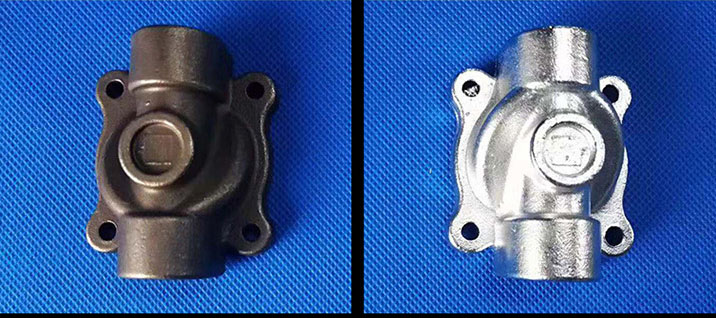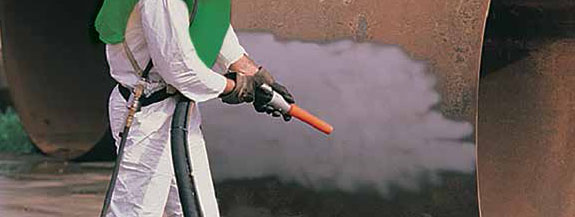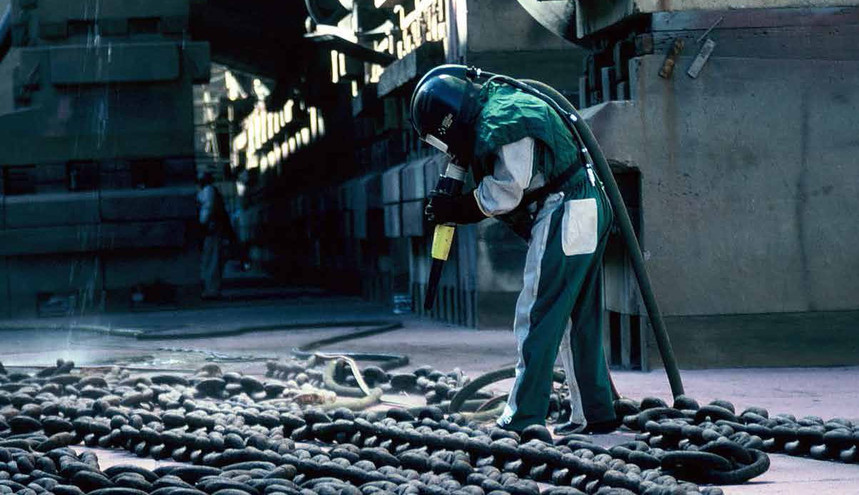|
What factors will affect the blasting effect of the blasting machine?1. Roughness of the workpiece surface The factors that affect the roughness of the surface are the strength and hardness of the part material, the diameter of sandblasting, the angle and speed of sandblasting, and the original surface roughness of the part. Strength and surface hardness of the part material, the more difficult the plastic deformation, the shallower the crater, the smaller the surface roughness value; the smaller the diameter of the sandblasting, the slower the speed, the shallower the crater , The surface roughness value becomes smaller; the larger the spray angle, the smaller the normal component of the sandblasting speed, the smaller the impact force, the shallower the crater, and the greater the tangential speed of the sandblasting, the abrasive effect of sandblasting on the surface The larger the value, the smaller the surface roughness value. The original surface roughness of the part is also one of the influencing factors. The coarser the original surface is, the smaller the value of the surface roughness decreases after sandblasting; on the contrary, the smoother the surface, the rougher the surface becomes after sandblasting. After high-strength sandblasting is performed on the parts, the deep craters not only increase the surface roughness value, but also form a larger stress concentration, which seriously weakens the effect of sandblasting.
2. The intensity of the sandblasting machine The process parameters that affect the intensity of blasting mainly include: blasting diameter, blasting flow speed, blasting flow, and blasting time. The larger the blasting diameter, the faster the speed, the greater the momentum of the collision between the blasting and the workpiece, and the greater the intensity of the blasting. The residual compressive stress formed by sandblasting can reach 60% of the tensile strength of the part material. The depth of the residual K stress layer is usually up to 0.25mm, and the maximum limit is 1mm. The blasting intensity requires a certain amount of blasting time to ensure that after a certain period of time, the blasting intensity is saturated, and then the blasting time is extended, and the intensity will no longer increase significantly. In the Almen test of the blasting strength, the blasting strength is characterized by an increase in the deformation of the test piece. In the Almen test, the commonly used test piece for sandblasting strength (used for non-ferrous metal test), A test piece (more commonly used), and C test piece (higher strength) are used for measurement. Between A test piece and C test piece The relationship is approximately three times the relationship. If the strength measured with the C test piece is 0.15 ~ 0.20tmn, it is equivalent to 0.45 ~ 0.60mm of the A test piece. In the test process, first measure the original deformation of the test piece, and then place the work device that clamps the test piece in the sandblasting box, and use the same process as the workpiece to spray. After the sandblasting is finished, remove the test piece and measure the deformation arch height of the scene.
3. The coverage rate of sandblasting machine Coverage measurement: Coat a layer of colored glaze or fluorescent glaze on the surface of the workpiece, and then sandblast the workpiece according to the process parameters. After blasting the surface of the workpiece, remove the workpiece and observe the residual coating under a microscope (magnifying glass). If the proportion of the surface is 20%, the sandblasting coverage is 80%. When the residue is only 2%, that is, when the coverage rate is 98%, it can be regarded as completely eliminated, that is, the coverage rate is 100%, and there is a required time. To reach 400% coverage, it will take four times the required time. The factors that affect the coverage rate are the hardness of the part material, the blasting diameter, the blasting angle and distance, and the blasting time. Under the specified sandblasting strength conditions, when the hardness of the parts is lower than or equal to the hardness of the standard test piece, the coverage rate can reach 100%; otherwise, the coverage rate will decrease. Under the same blasting flow, the longer the distance between the nozzle and the workpiece, the smaller the injection angle, and the smaller the blasting diameter, the shorter the time required to reach the coverage rate. When blasting and strengthening, the blasting, blasting angle and distance should be selected to make the blasting strength and coverage reach the required value at the same time.
Tongbao Technology is dedicated to provide our customers with high-quality products and services!! We can customize CNC automatic sandblasting equipment for you! ! ! Contact Email:sales@zjtongbao.com |










